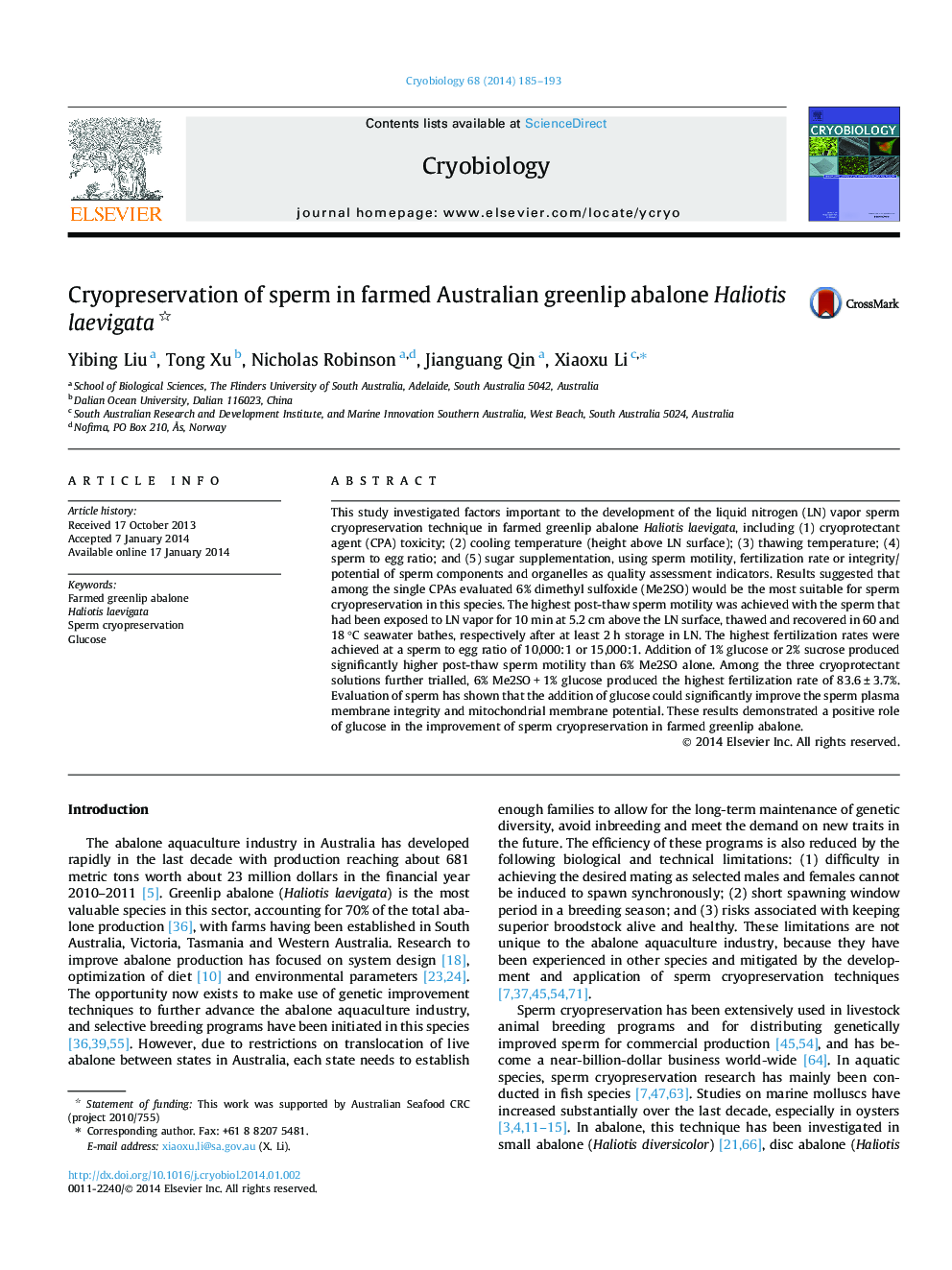| Article ID | Journal | Published Year | Pages | File Type |
|---|---|---|---|---|
| 10927974 | Cryobiology | 2014 | 9 Pages |
Abstract
This study investigated factors important to the development of the liquid nitrogen (LN) vapor sperm cryopreservation technique in farmed greenlip abalone Haliotis laevigata, including (1) cryoprotectant agent (CPA) toxicity; (2) cooling temperature (height above LN surface); (3) thawing temperature; (4) sperm to egg ratio; and (5) sugar supplementation, using sperm motility, fertilization rate or integrity/potential of sperm components and organelles as quality assessment indicators. Results suggested that among the single CPAs evaluated 6% dimethyl sulfoxide (Me2SO) would be the most suitable for sperm cryopreservation in this species. The highest post-thaw sperm motility was achieved with the sperm that had been exposed to LN vapor for 10 min at 5.2 cm above the LN surface, thawed and recovered in 60 and 18 °C seawater bathes, respectively after at least 2 h storage in LN. The highest fertilization rates were achieved at a sperm to egg ratio of 10,000:1 or 15,000:1. Addition of 1% glucose or 2% sucrose produced significantly higher post-thaw sperm motility than 6% Me2SO alone. Among the three cryoprotectant solutions further trialled, 6% Me2SO + 1% glucose produced the highest fertilization rate of 83.6 ± 3.7%. Evaluation of sperm has shown that the addition of glucose could significantly improve the sperm plasma membrane integrity and mitochondrial membrane potential. These results demonstrated a positive role of glucose in the improvement of sperm cryopreservation in farmed greenlip abalone.
Related Topics
Life Sciences
Agricultural and Biological Sciences
Agricultural and Biological Sciences (General)
Authors
Yibing Liu, Tong Xu, Nicholas Robinson, Jianguang Qin, Xiaoxu Li,
